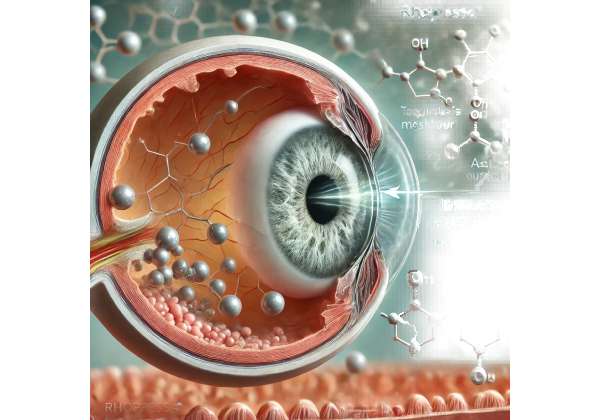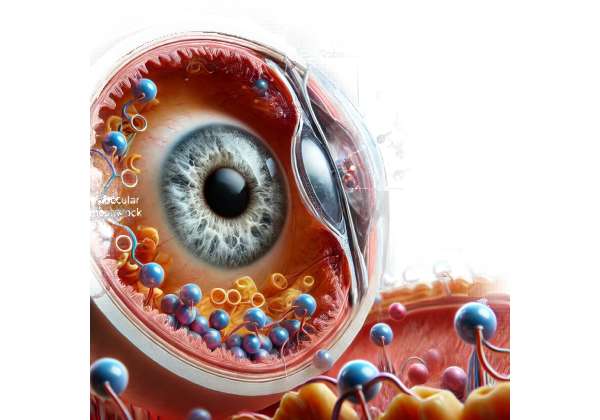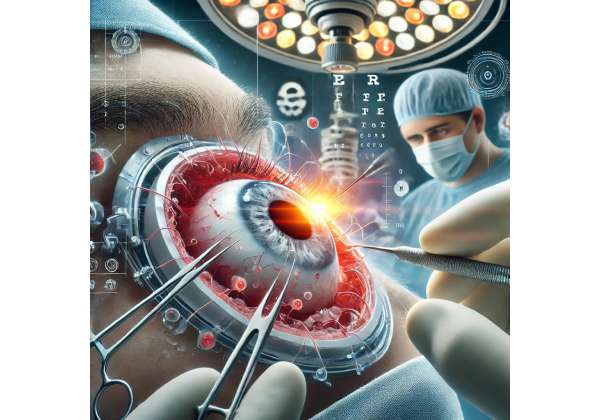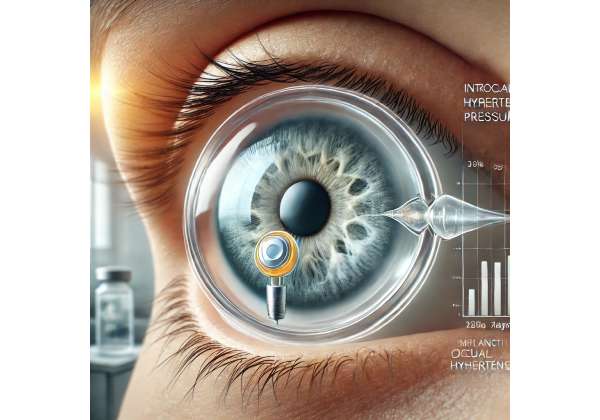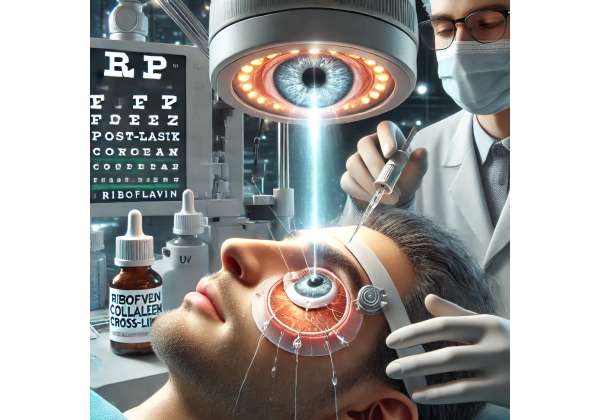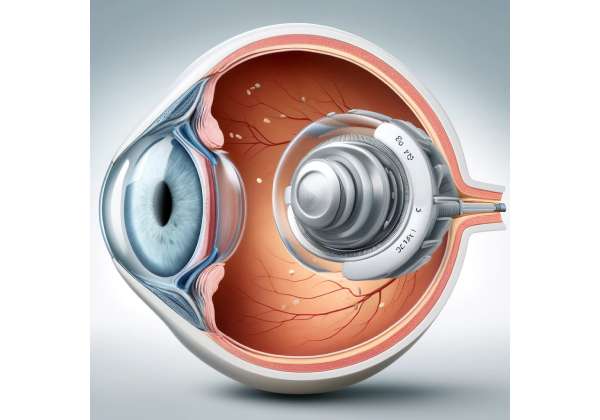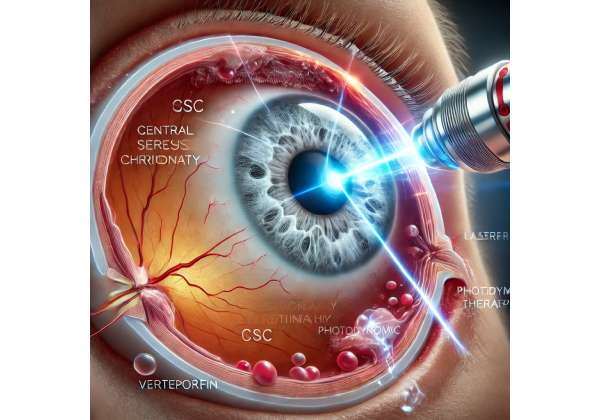Say Goodbye to Daily Drops Biannual Hydrogel Injections for Glaucoma
Imagine easing the burden of daily eye drops with just two treatments a year. That’s the promise of biannual hydrogel injections, an emerging therapy that aims to simplify glaucoma care and improve pressure control. Rather than relying on a string of alarms and schedules, patients could enjoy freedom from daily regimens—knowing that a specialized gel is continually working to...
Rocklatan Combining Netarsudil and Latanoprost for Advanced Glaucoma Treatment
Innovation has become the cornerstone of modern glaucoma management, offering new possibilities for those seeking to protect their vision. One such breakthrough is Rocklatan—a blend of netarsudil and latanoprost specifically crafted to improve how fluid drains from the eye. This dual formulation stands out because it targets multiple physiological pathways that regulate intraocular pressure (IOP), aiming for more substantial...
Rituximab in Autoimmune Uveitis Monoclonal Antibody Therapy and Vision Outcomes
Engaging in advanced treatments for autoimmune-related vision challenges has become a central goal for specialists worldwide. Among the most promising innovations in this area is the use of monoclonal antibody therapy, specifically Rituximab. This targeted therapy is acclaimed for its capacity to address underlying immune processes while preserving overall eye health. As clinicians and researchers continue to refine protocols...
Rigerimod (P140 Peptide) The Latest Therapy Revolutionizing Sjögren’s Syndrome and Autoimmune Eye Disease Treatment
Have you ever wished for a therapy that not only addresses uncomfortable eye symptoms but also tackles the underlying immune imbalance? Rigerimod, also known as P140 Peptide, could be the breakthrough many have been waiting for. Rather than treating each symptom in isolation, Rigerimod aims to recalibrate the immune response itself—particularly relevant in autoimmune eye conditions such as those...
Rhopressa’s Role in Glaucoma Treatment Increasing Aqueous Humor Outflow with New Therapy
Have you ever wondered if there’s a more direct way to tackle elevated eye pressure (IOP) by targeting the natural drainage pathways, rather than just slowing fluid production? Rhopressa provides exactly that opportunity. This once-daily eye drop is specifically formulated to increase aqueous humor outflow, which helps reduce the load on your optic nerve. Instead of taking a broad...
Rho Kinase Inhibition with Rhopressa A Modern Strategy for Ocular Hypertension
Are you looking for a fresh approach that could ease pressure inside your eyes and help protect long-term vision? Rhopressa, a cutting-edge eye drop targeting the Rho kinase pathway, aims to lower intraocular pressure (IOP) in a novel way. Rather than relying solely on more traditional medications like beta-blockers or prostaglandin analogs, Rhopressa uses its active ingredient to modify...
Revolutionizing Macular Degeneration Treatment How Hyperbaric Oxygen Therapy Offers New Hope
Picture a safe, noninvasive method that may enhance visual function by tapping into the power of oxygen. Hyperbaric Oxygen Therapy (HBOT) aims to do exactly that: provide an oxygen-rich environment that could bolster cellular health and potentially slow the progression of certain eye conditions. This unique approach places patients in a specialized chamber where they breathe 100% oxygen at...
Revolutionary Corneal Repair Using Umbilical Cord-Derived Stem Cells A Solution for Ocular Trauma
Have you ever imagined a treatment that can promote natural corneal healing by harnessing the body’s own regenerative abilities? Umbilical cord-derived stem cells are emerging as a powerful ally in restoring clarity to damaged corneas, offering hope for those recovering from ocular trauma. Rather than relying solely on conventional transplant methods or extended use of artificial ocular devices, this...
Retinal-Derived Peptide (RDP) A Revolutionary Therapy Advancing Treatment for Age-Related Macular Degeneration
Have you ever imagined a targeted therapy that can promote healthier cell function in the retina and potentially slow down vision decline? Retinal-Derived Peptide (RDP) is stepping into the spotlight as a transformative option, aimed at supporting the eye’s natural regenerative pathways. Rather than relying solely on existing medications that control symptoms, RDP strives to address fundamental mechanisms in...
Restasis for Chronic Dry Eye Disease Enhancing Tear Production and Reducing Inflammation with Modern Cyclosporine Therapy
Are you looking for a way to boost your eye comfort and address the persistent irritation that can come from inadequate tear production? Restasis, a modern formulation of cyclosporine therapy, presents an innovative route to calming ocular inflammation and allowing the eyes to better produce their own natural tears. Rather than merely masking dryness or providing short-term relief, Restasis...
ReLEx SMILE An Innovative Approach to Correcting Myopia with Cutting-Edge Laser Surgery
Have you ever thought about ditching your eyeglasses or contact lenses for clearer vision but felt uncertain about traditional laser procedures? ReLEx SMILE may be the advancement you’ve been waiting for. This cutting-edge laser vision correction method aims to provide a gentler, minimally invasive alternative to older techniques. Instead of creating a larger flap or making multiple incisions in...
Reducing Inflammation in Ocular Surface Disease with Pulsed Electromagnetic Field Therapy
Are you looking for an innovative approach to help calm irritation and maintain healthier eyes? Pulsed Electromagnetic Field (PEMF) Therapy may offer a promising route for those seeking to minimize inflammatory reactions in the ocular surface. While traditional methods for addressing eye discomfort often revolve around topical solutions or oral medications, PEMF Therapy stands out for its noninvasive, energy-based...
Reducing Eye Pressure Over Time PolyActiva’s Role in New Ocular Hypertension Treatment
Are you ready to explore a next-generation option that offers hope for smoother, more consistent eye care? Eye pressure management can be a constant concern for those living with ocular hypertension or early-stage glaucoma, but the spotlight is now on an innovative therapy: PolyActiva. Rather than wrestling with daily eye drops or juggling complicated routines, PolyActiva’s technology aims to...
Recombinant Human Nerve Growth Factor Eye Drops for Neurotrophic Keratitis Promoting Nerve Regeneration
Recombinant Human Nerve Growth Factor (rhNGF) eye drops represent a transformative innovation in ocular therapeutics, offering new hope for patients suffering from neurotrophic keratitis. This advanced therapy is designed to stimulate nerve regeneration and repair, addressing the underlying causes of corneal epithelial breakdown and poor healing. By leveraging cutting-edge biotechnology, rhNGF eye drops promote the restoration of corneal nerve...
QR-1123 (ProQR Therapeutics) Targeting P23H Mutation for Reduced Toxic Protein Production in Retinitis Pigmentosa
QR-1123 represents a groundbreaking advance in the fight against retinitis pigmentosa—a degenerative eye disease that can lead to blindness. Developed by ProQR Therapeutics, this innovative therapy specifically targets the P23H mutation, a common genetic defect known to cause the production of toxic proteins in photoreceptor cells. By reducing the synthesis of these harmful proteins, QR-1123 offers the potential to...
Pulsed Light Therapy for Meibomian Gland Dysfunction: How IPL Improves Tear Quality
Pulsed Light Therapy, commonly known as Intense Pulsed Light (IPL) therapy, is revolutionizing the treatment landscape for Meibomian Gland Dysfunction (MGD) by offering a non-invasive approach to improve tear quality. This advanced therapy harnesses broad-spectrum light pulses to target and treat the underlying dysfunction of the meibomian glands, which play a crucial role in maintaining a healthy tear film....
Pulsed Electromagnetic Field Therapy for Chronic Ocular Pain: A Non-Invasive Relief Option
Pulsed Electromagnetic Field (PEMF) therapy is emerging as an innovative, non-invasive solution for managing chronic ocular pain. This advanced treatment modality harnesses low-frequency electromagnetic pulses to modulate cellular activity, reduce inflammation, and alleviate pain associated with various ocular conditions. With its gentle approach and promising benefits, PEMF therapy offers a new pathway for patients who have long struggled with...
Prosthetic Retinal Devices for Severe Retinal Degeneration: How the PRIMA System Restores Light Perception
Prosthetic retinal devices are ushering in a new era for individuals with severe retinal degeneration. Among these innovations, the PRIMA system stands out as a groundbreaking technology designed to restore light perception and, in turn, improve visual function. This advanced prosthetic implant leverages cutting-edge photovoltaic technology to convert light into electrical signals that stimulate the remaining viable retinal neurons....
Prolensa Managing Postoperative Ocular Inflammation After Cataract Surgery with Advanced Therapy
Prolensa represents a new era in the management of postoperative ocular inflammation, offering an advanced therapeutic option that enhances recovery after cataract surgery. By addressing inflammation at its source, Prolensa not only improves patient comfort but also supports faster healing and better overall surgical outcomes. This innovative therapy is designed to target the cascade of inflammatory responses that typically...
PRIMA Bioelectronic Vision Restoration Device: How It’s Helping AMD Patients Regain Sight
Innovative breakthroughs in bioelectronic medicine are opening new horizons for patients with age-related macular degeneration (AMD). The PRIMA Bioelectronic Vision Restoration Device represents a paradigm shift in vision restoration therapies by harnessing cutting-edge technology to stimulate retinal function. Designed to bypass damaged photoreceptors and reintroduce light perception, this advanced system offers renewed hope to individuals who have long struggled...
Preventing Cataracts: How Molecular Hydrogen Therapy Offers New Hope
Molecular hydrogen therapy is emerging as a groundbreaking approach in the quest to prevent cataracts, offering innovative benefits that extend beyond traditional treatments. By harnessing the natural antioxidant properties of molecular hydrogen, this therapy aims to neutralize oxidative stress—a key factor implicated in the formation of cataracts. Instead of merely managing the progression of lens opacification, molecular hydrogen therapy...
Prednisolone Acetate for Severe Allergic Conjunctivitis: A Trusted Solution for Persistent Symptoms
Severe allergic conjunctivitis can significantly disrupt daily life, but innovative therapies are offering new hope for patients with persistent symptoms. Prednisolone acetate has emerged as a trusted solution, providing rapid and effective relief through its potent anti-inflammatory properties. This advanced corticosteroid formulation is designed to target inflammation directly within the ocular tissues, helping to alleviate discomfort and prevent long-term...
Post-Surgical Choroidal Effusion Management with Choroidal Effusion Drainage Techniques
Post-surgical choroidal effusion is a complication that can arise after various ocular procedures, leading to transient visual disturbances and discomfort. Advances in ocular surgery and postoperative care have paved the way for innovative drainage techniques that not only alleviate these symptoms but also enhance anatomical restoration and overall visual recovery. By directly addressing the accumulation of fluid in the...
Post-LASIK Ectasia Management with Corneal Collagen Cross-Linking Preventing Further Vision Loss
Post-LASIK ectasia is a challenging complication, yet innovative therapies are reshaping how ophthalmologists preserve vision and restore corneal integrity. Among these, corneal collagen cross-linking (CXL) stands out as a breakthrough treatment that not only stabilizes the ectatic cornea but also prevents progressive vision loss. By strengthening the corneal stroma through a controlled photochemical reaction, CXL reinforces the weakened corneal...
Post-LASIK Ectasia Management with Corneal Collagen Cross-Linking Preventing Further Vision Loss
Post-LASIK ectasia is a challenging complication, yet innovative therapies are reshaping how ophthalmologists preserve vision and restore corneal integrity. Among these, corneal collagen cross-linking (CXL) stands out as a breakthrough treatment that not only stabilizes the ectatic cornea but also prevents progressive vision loss. By strengthening the corneal stroma through a controlled photochemical reaction, CXL reinforces the weakened corneal...
Pneumatic Retinopexy: A Less Invasive Alternative for Retinal Detachment Repair
Pneumatic retinopexy represents one of the most exciting advances in ophthalmic procedures, offering patients a less invasive option for retinal detachment repair. This innovative therapy leverages a simple yet powerful concept: by injecting a small gas bubble into the eye, the detached retina can be gently repositioned against the underlying tissue. When combined with precise laser photocoagulation or cryotherapy,...
Photothermal Therapy for Central Serous Chorioretinopathy: The Role of Photodynamic Therapy with Verteporfin
Photothermal therapy is emerging as an innovative approach in the management of central serous chorioretinopathy (CSC), and when combined with photodynamic therapy (PDT) using verteporfin, it offers a transformative solution for patients. This cutting-edge treatment harnesses the power of light to initiate a cascade of biological effects that target abnormal choroidal vasculature, ultimately reducing leakage and restoring retinal integrity....
Photobiomodulation Therapy for Optic Neuritis: Reducing Inflammation and Supporting Vision Recovery
Photobiomodulation therapy (PBMT) is emerging as a cutting-edge, non-invasive treatment option that is transforming how clinicians approach optic neuritis. By harnessing specific wavelengths of light, PBMT stimulates cellular processes that reduce inflammation and promote tissue repair, offering renewed hope for vision recovery. Unlike conventional therapies that may rely on systemic medications or invasive procedures, PBMT provides a targeted approach...
Photobiomodulation Therapy for Age-Related Macular Degeneration: Can Light Therapy Slow the Progression of Vision Loss
Photobiomodulation therapy (PBMT) is emerging as a groundbreaking, non-invasive treatment that uses specific wavelengths of light to promote cellular repair and reduce inflammation in ocular tissues. With its innovative mechanism of action, PBMT is gaining attention as a potential means to slow the progression of vision loss in age-related macular degeneration (AMD). By targeting the cellular components responsible for...
P3 MicroPulse Laser: The Future of Transscleral Laser Therapy for Glaucoma
The rapid evolution of laser technology is reshaping the landscape of glaucoma management, and the P3 MicroPulse Laser stands at the forefront of this transformation. This innovative approach harnesses precision micropulse energy to offer a non-invasive, targeted treatment that minimizes collateral tissue damage while effectively reducing intraocular pressure. By delivering short, controlled bursts of laser energy through the sclera,...






